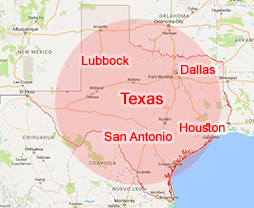DWI Arrest and Vehicle Disposition
Once a decision has been made to arrest a Driver for Driving While Intoxicated (DWI), officers must:
A. Advise the suspect that an arrest for DWI will be made.
B. The Miranda Warnings should not be read to the suspect at the time of the arrest. Accordingly, no interrogation should be conducted at the scene once the suspect has been arrested. The DIC 24 (Police Officer DWI Statutory Warning) should not be given at the scene.
C. Make disposition of the suspect’s vehicle in accordance with established procedure.
D. Unopened and empty alcoholic beverage containers must be noted in the DWI report, but must not be collected and tagged as evidence.
E. The suspect must be transported to the jail and must not be allowed to smoke, eat, or drink. If the suspect has been in- volved in an accident, an assist officer must investigate the accident. The accident report and related charges must be coordinated with the arresting officer and properly completed.
F. The following procedure will apply only when a DWI suspect has been admitted to the hospital and will not apply when the DWI suspect is to be treated and released. When the hospital staff advises that the DWI suspect will be admitted:
1. The officer guarding the suspect will:
a. Ensure that proper identification of the arrested person has been obtained.
b. Verify all necessary evidence has been obtained such as blood test, clothing seized, etc.
c. When both of the above have been accomplished, the officer must notify the jail supervisor.
2. The Jail Supervisor will determine if any of the following exists:
a. The arrested person is suspected of driving a vehicle involved in an accident which resulted in death of any person, or another person may die as a result of the accident;
b. The arrested person has previously been arrested or convicted for DWI within the last five (5) years;
c. The arrested person has two (2) or more previous DWI convictions; or,
d. The arrested person is currently on parole or probation.
3. If any of the above apply, a guard will be posted. If none of the above apply, the jail supervisor must:
a. Notify the affected division’s on-duty supervisors that no guard will be kept on the prisoner;
b. Notify the officer guarding the prisoner that it is no longer necessary to guard the prisoner; and,
c. Note on the Jail Registration Sheet, the date, time, and division supervisor notified that the guard on the pris- oner was removed.
4. If unable to verify identification, the guarding officer will ensure the following is completed before releasing the suspect:
a. Crime Scene must be called to photograph and fingerprint the suspect.
b. Ensure that the jail supervisor, respective CID supervisor, or traffic supervisor is notified of the photographing and fingerprinting of the suspect and that the guard is clearing the scene.
G. If a DWI suspect is admitted to a hospital and circumstances arise jeopardizing the submission of the DWI case pack- age in a timely manner, traffic investigators will be responsible for notifying the jail supervisor that the suspect will not be filed on immediately; notifying the jail supervisor to remove the guard from the DWI suspect; the issuance of an arrest warrant, if probable cause exists for an arrest; and the filing of any DWI case with the District Attorney’s office when an arrest warrant is issued.






